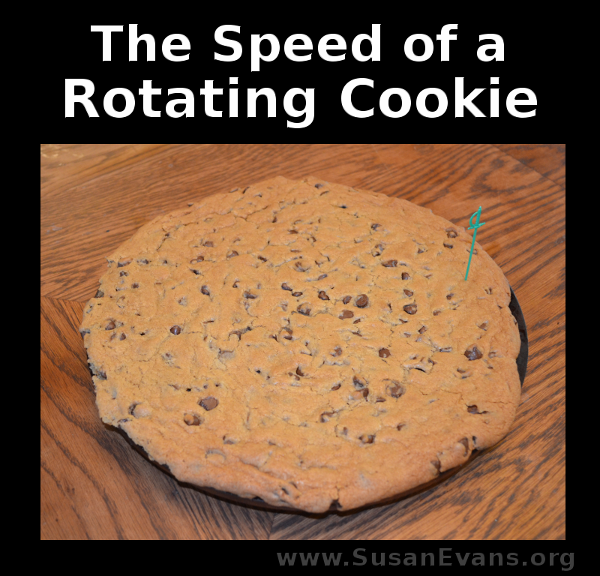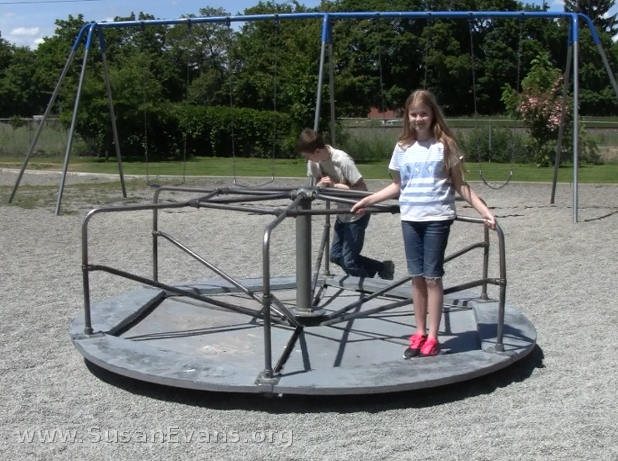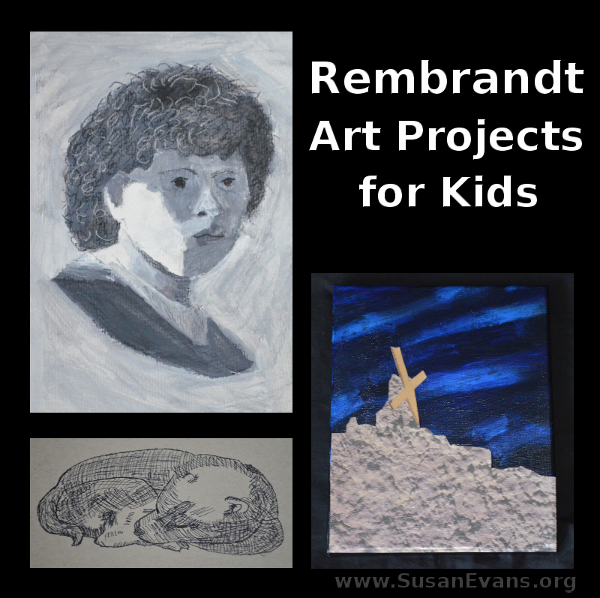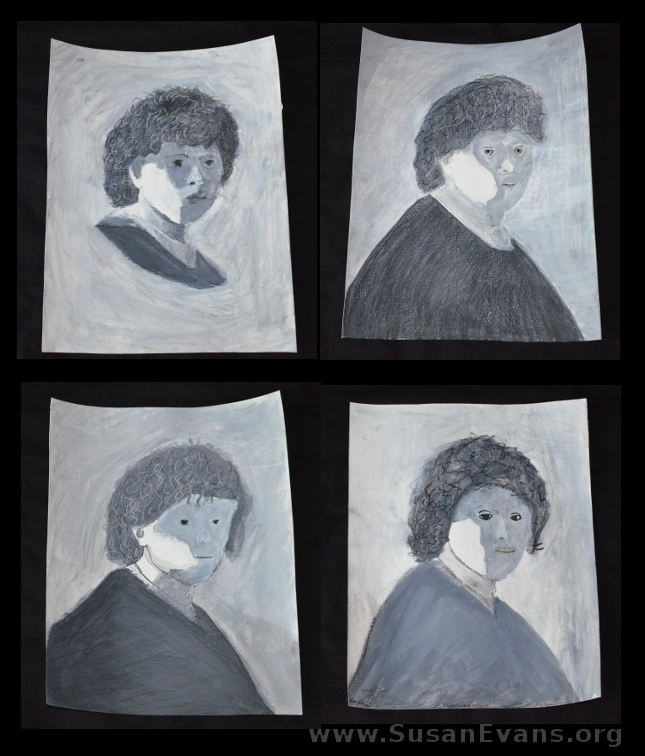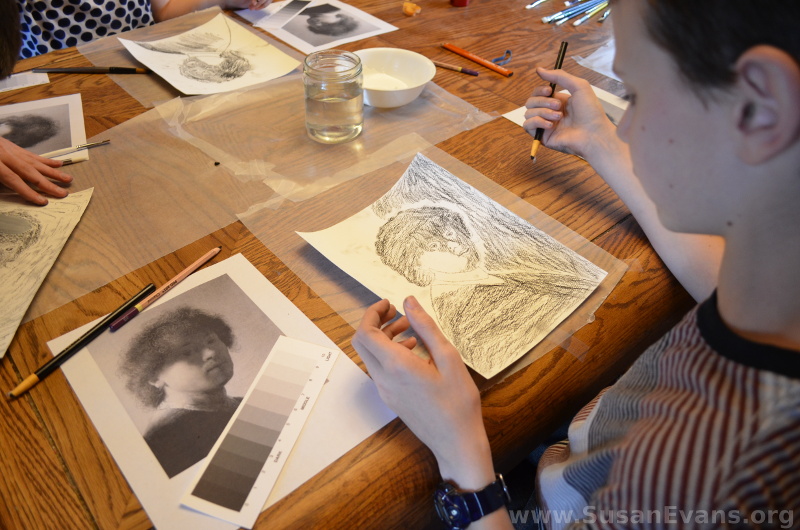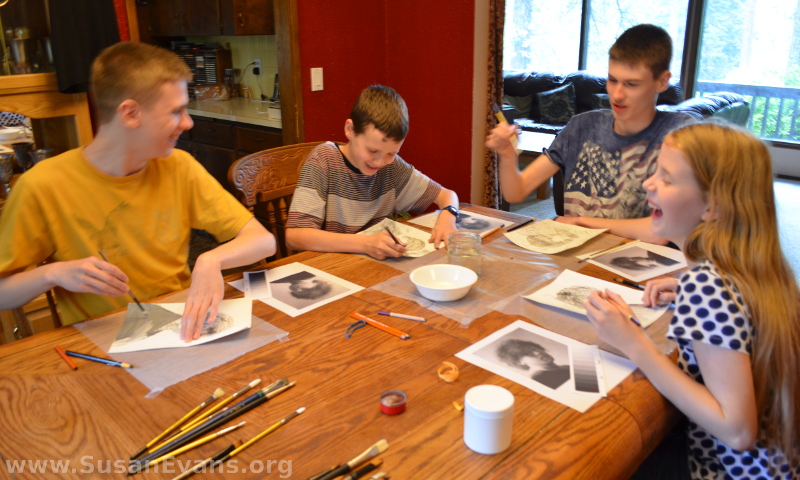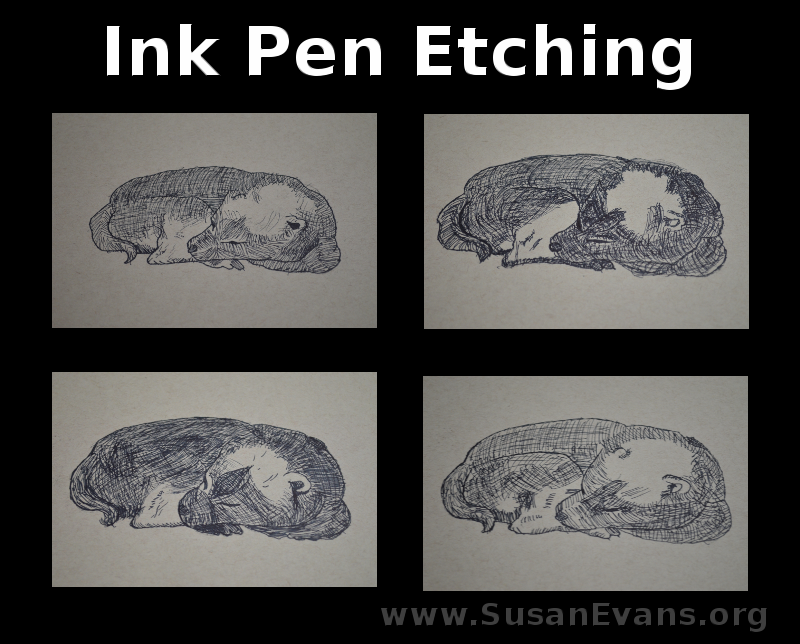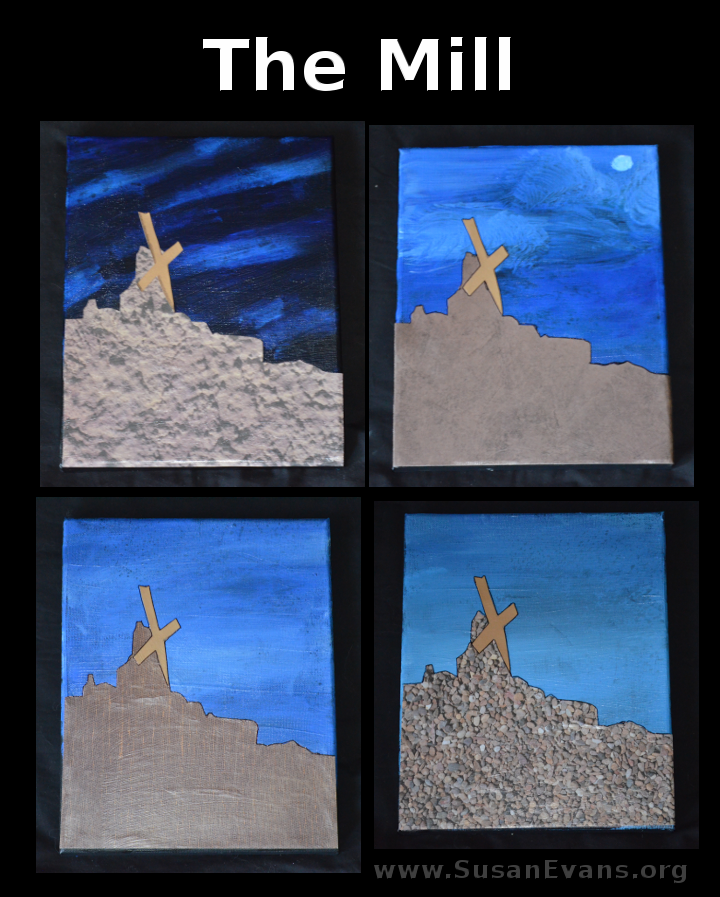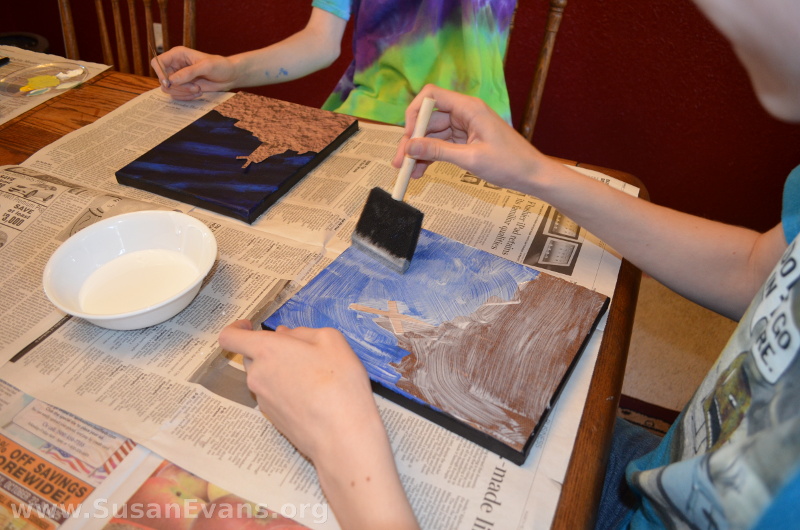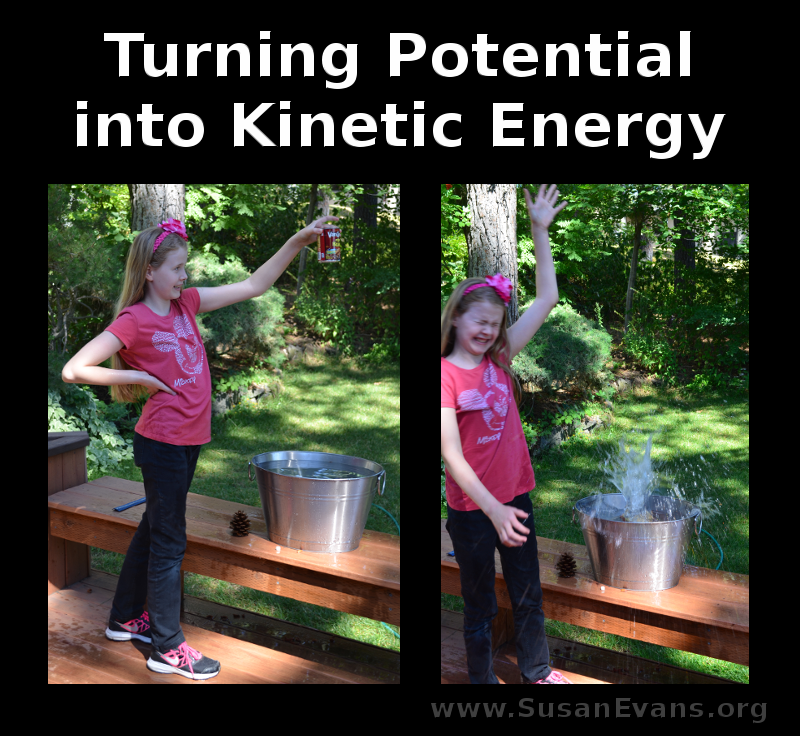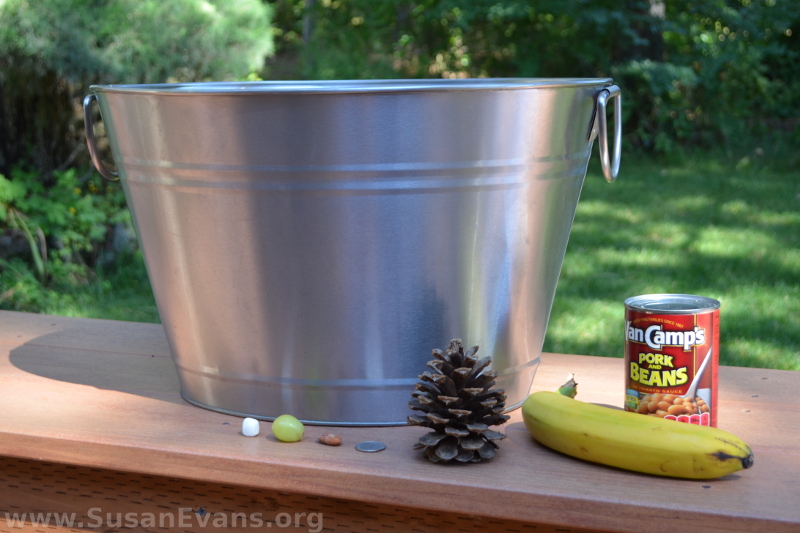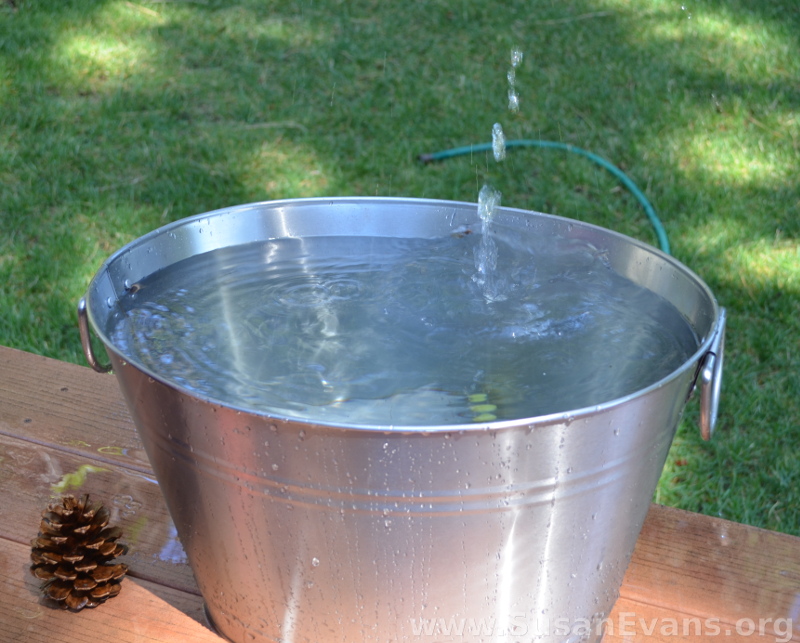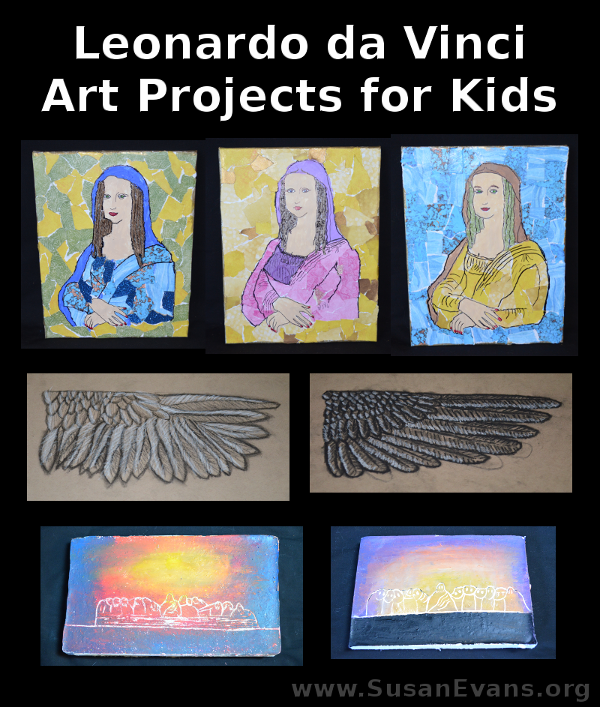
This post contains affiliate links. I was given access to the class to blog about it, which I was very glad to do.
I’ve been wanting my kids to get proper art instruction for years now, especially for my oldest son who is a natural artist. So when I found this Mixing with the Masters art class, I was eager to join. And I wasn’t disappointed! There are six great artists that will be covered in this online class, with three art projects for each artist. You can do them at your own pace and can spread them out over an entire homeschool year if you want, taking one artist per month instead of one per week.

The first artist was Leonardo da Vinci. There are three substantial tutorial videos, along with an introductory and concluding video, along with a lot of other goodies, like printables and links to other sites that are about Leonardo da Vinci.
Mona Lisa Collage: Torn Paper on Canvas

The first art project is mixed media. Alisha (the instructor) gives specific instructions on how to do decoupage on canvas with torn paper, creating a gorgeous Mona Lisa! My kids’ masterpieces looked like stained glass windows! We broke the project down into three days: one for the torn papers, so they could dry; one for paint, so that it could dry; and one for the detail work at the end.
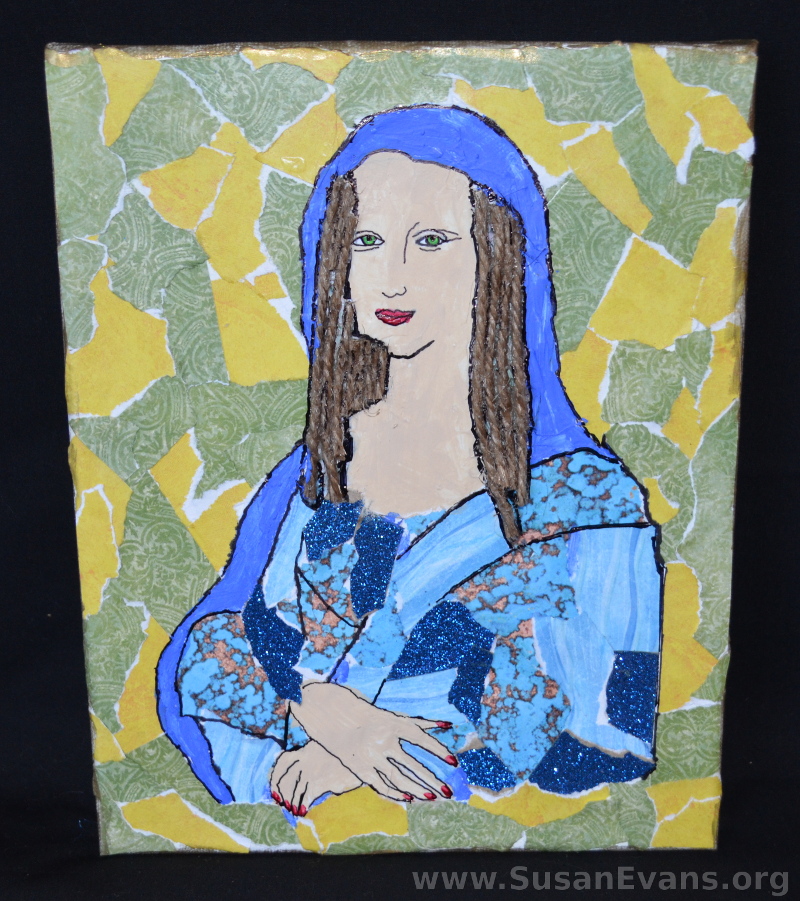
You’re probably laughing if you looked closely at the blue Mona Lisa. Yes, my 16-year-old son used twine for her hair, which makes her look like she has dreadlocks. Oh, there’s another cool thing about this class–besides self-expression. I’m using this as high school art credit.
If you would like to integrate language arts into your study of the Mona Lisa, you can write a poem about her. Here is a hysterical poem written by my 11-year-old son:
Leonardo da Vinci Charcoal Wing
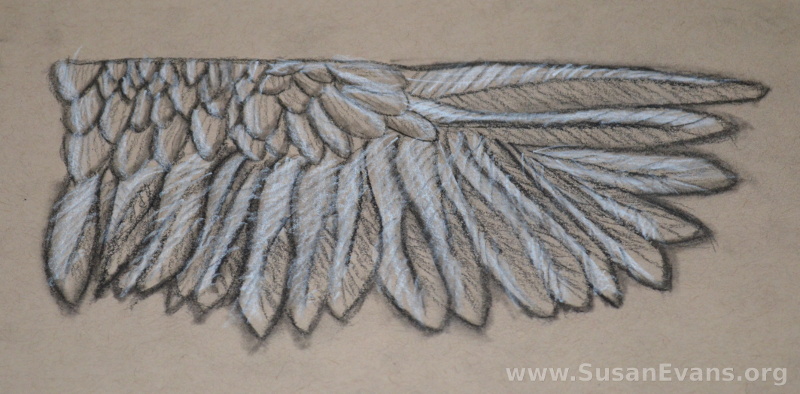
The second art project was charcoal on tan sketching paper. (You can stain some computer paper with tea if you don’t have any tan paper, or use tan card stock paper or construction paper.) We also used a blending stump, which we’ve never used before, and a white charcoal pencil for highlighting. My children watched the video demonstration and did each step. Their wings came out great! And my artist son gained new skills in shading and in using a medium he had never used before.
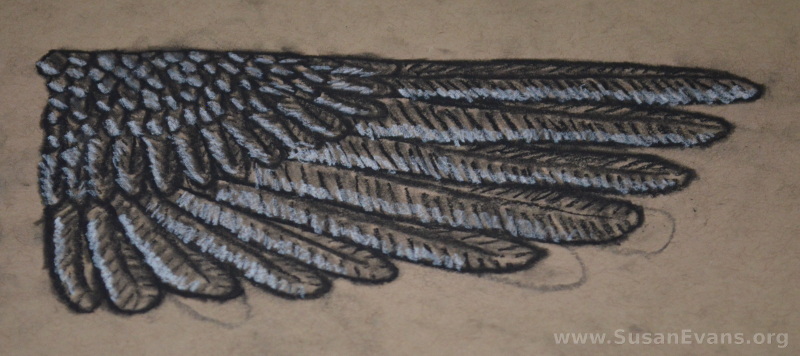
After the video demonstration, when my children were finished with their Leonardo da Vinci wings, I grabbed some tan paper, looked into a mirror, and I drew a self portrait:
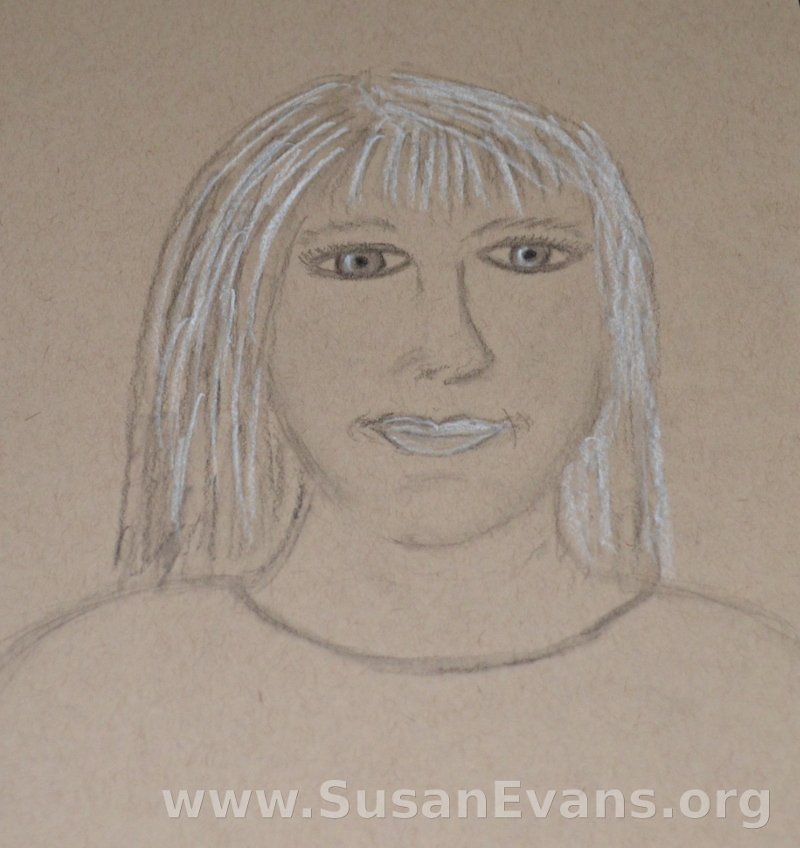
I think it came out great, considering I’m not an artist!
Last Supper Fresco
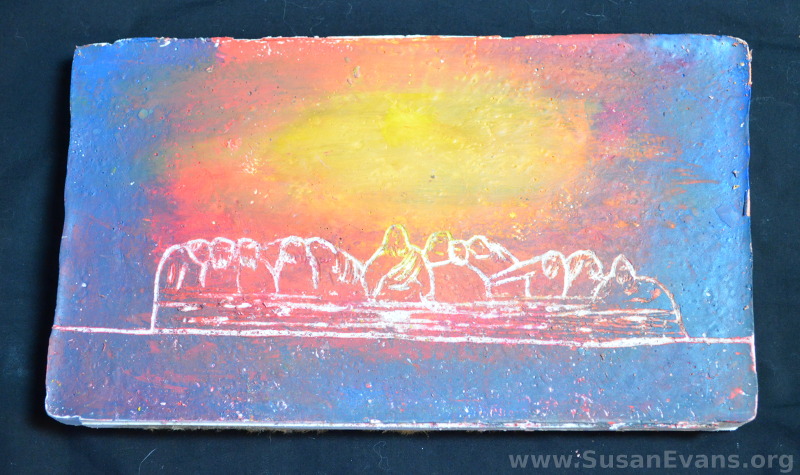
The third project was a Last Supper fresco. My kids were familiar with the famous painting because we made the Last Supper in LEGO last year. Ha! My son did a great job positioning Jesus and the disciples in the exact same postures as the famous painting!
For the Last Supper fresco, Alisha did a close-up of some pewter dishes on the table with the robe of Jesus in the background. We decided to do a sunset and an etching of the Last Supper:
- Day 1: We poured Plaster of Paris into a lid of a shoe box.
- Day 2: The kids painted a sunset, spraying the dry plaster with water as they worked, which melded the colors together.
- Day 3: We etched the Last Supper with a mechanical pencil with no lead. It showed the Plaster of Paris underneath.
We thoroughly enjoyed this class and gained new skills. If you can’t afford to buy the whole class (the set of 6), you can always buy this class separately if you are studying the Renaissance in history. Who could study the Renaissance without doing art?

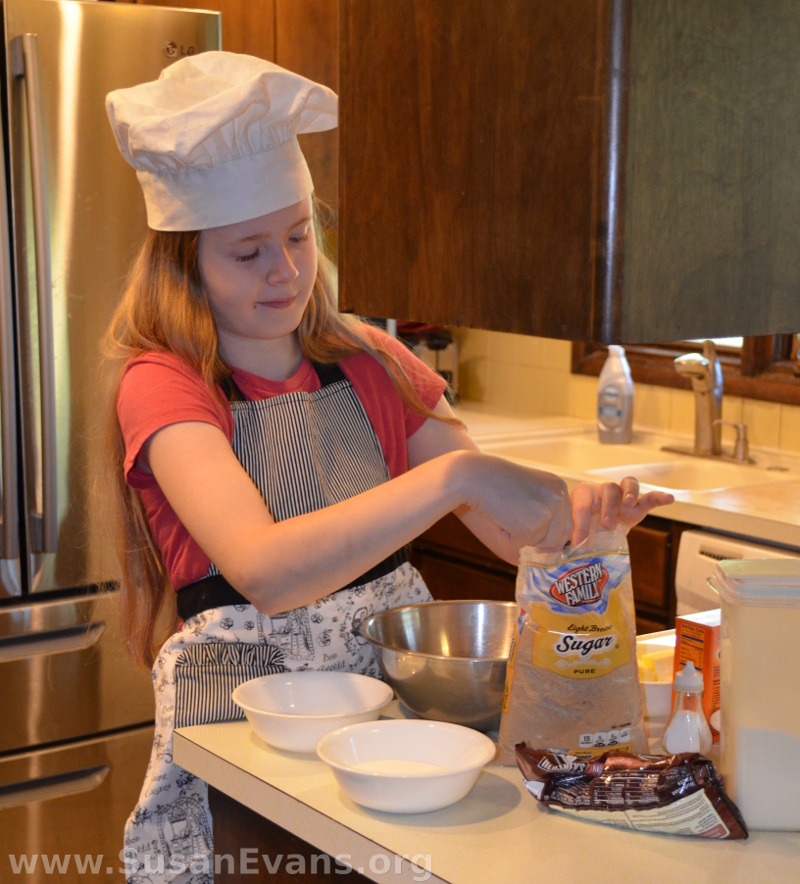 This post contains affiliate links. I was compensated for my work in writing this post.
This post contains affiliate links. I was compensated for my work in writing this post.